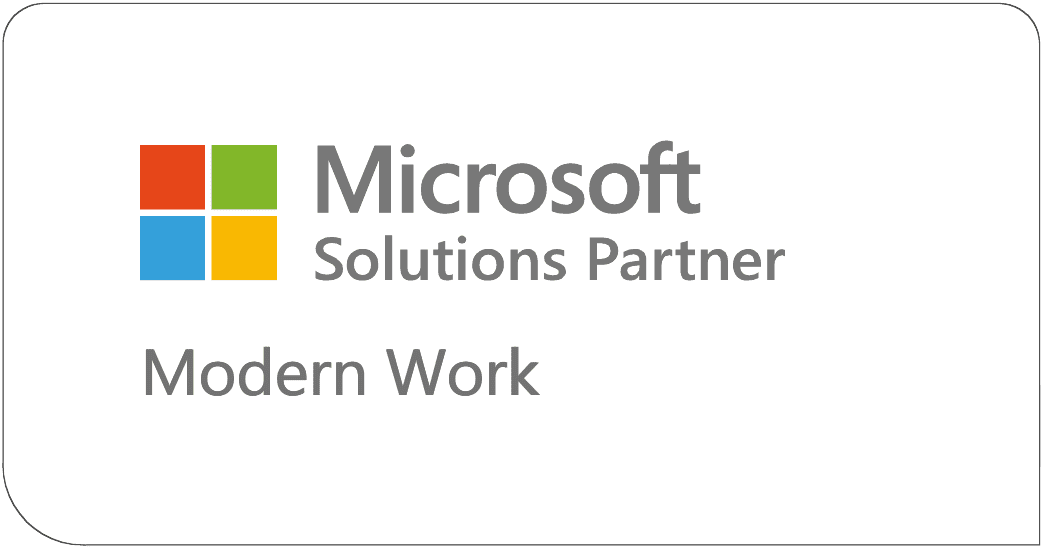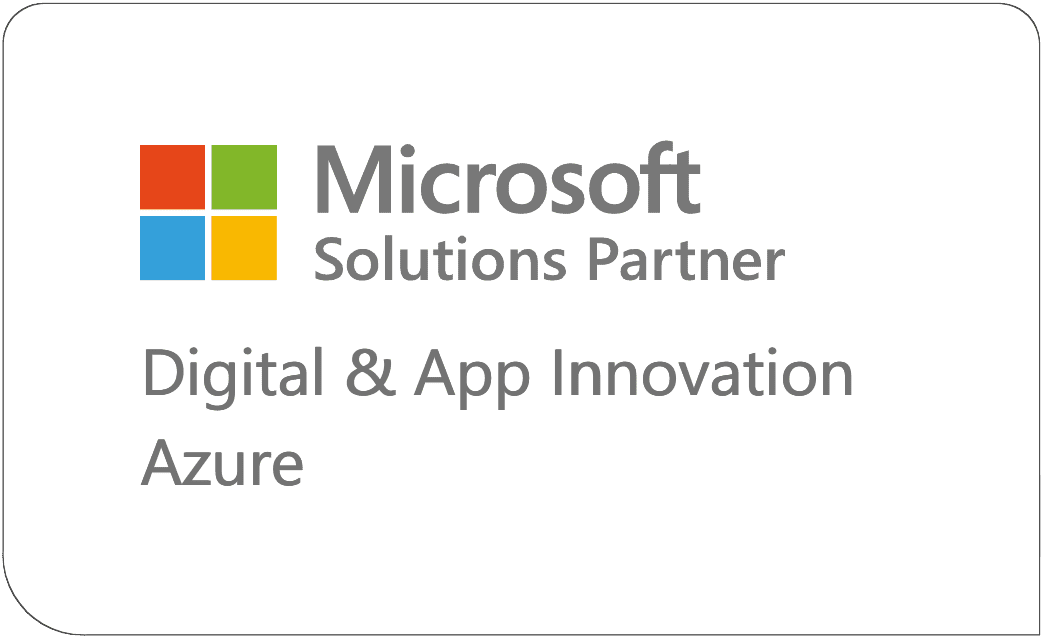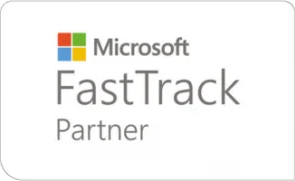Introduction
Over the years, we’ve had the opportunity to work on dozens of PowerApps Component Framework (PCF) projects using React, TypeScript, Fluent UI, and Ant Design – all on top of Dynamics 365 Business Apps (Sales, Field Service etc.), Custom Model-Driven Apps, Canvas Apps, and Power Pages. I’ve learned that the best custom controls aren’t just about flashy UI – they’re about solving real business problems that prevent users from adopting the system.
PCF has been a game-changer in extending Dynamics 365 and Power Platform capabilities with modern, responsive user interfaces. It helps transform Dynamics 365 with cutting-edge custom components that feel both native and delightful to use.
Today, I want to share few examples from recent client projects that showcase how PCF development can transform the Dynamics 365 experience. Each of these solutions addressed specific pain points that were either forcing users back to other systems or creating significant friction in their daily workflows.
Example 1: Editable Data Grid for Field Service Resource Management
The Challenge
One of our Field Service clients was struggling with user adoption. Their team needed to manage installation resources and schedules, but the available custom and out-of-box grids required multiple clicks to edit even simple resource/scheduling data. The system was so cumbersome that users refused to migrate from Excel and legacy tools – defeating the purpose of implementing Dynamics 365.
The Solution
We built a custom Editable Data Grid control using React, Ant Design, and Fluent UI that consolidates data from multiple source tables into a single, interactive view. Users can now edit data inline, make batch updates, validate entries in real-time, and reset changes as needed (see Figure 1.1 below).
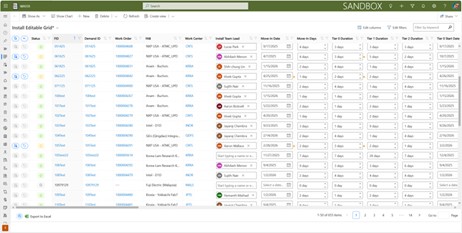
What makes this control particularly powerful is its integration with the native Dynamics 365 view personalization features. Users can add columns, rearrange them, apply filters, and save personal views-all while working in our custom grid. The inline editing capabilities reduced what used to take 5-10 clicks per record down to a single cell edit.
The Impact
This control became the catalyst for finally making Field Service the single source of truth for installation planning, eliminating shadow systems and improving data accuracy across the organization.
Example 2: Meeting Attendee Management Pivot Grid
The Challenge
A Dynamics 365 Sales customer needed to manage complex meeting plans, each containing 10-50 appointments with different attendees (required, optional, or CC’d). With the out-of-box system, there was no easy way to view or manage attendee participation across multiple appointments – it was a nightmare of clicking through individual records.
The Solution
We developed a PCF control featuring a pivot grid interface that completely reimagines how users interact with meeting data. The top section contains two custom grids for selecting attendees (customers, internal employees, or groups) and appointments (see Figure 2.1 below). As you make selections, a dynamic pivot table appears below, showing attendees in rows and appointments in columns.
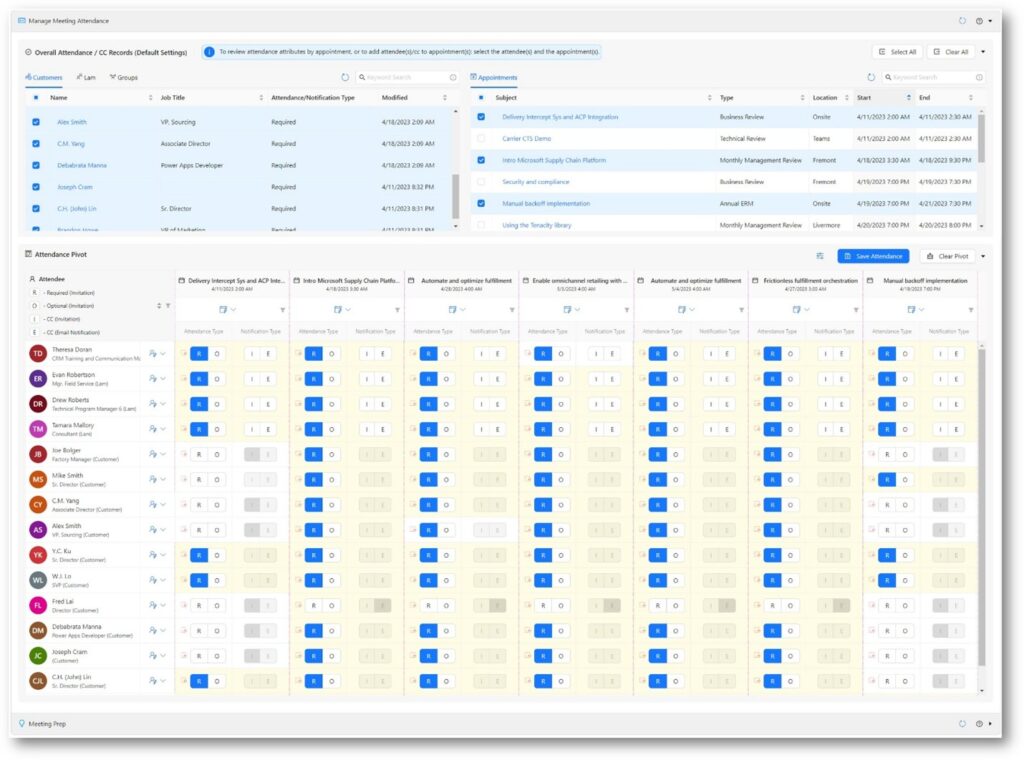
Each cell in the pivot displays and allows editing of the attendance requirement (see Figure 2.2 below). Users can see the entire meeting landscape at a glance and make bulk changes across multiple appointments and attendees. A single submit action commits all changes to the backend tables in one transaction.
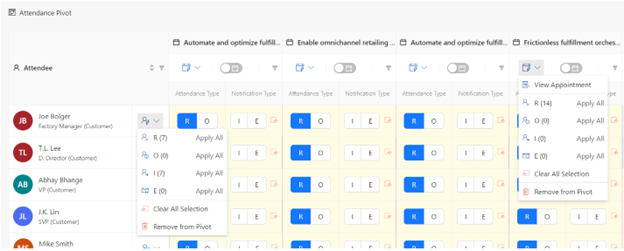
The Impact
What used to take hours of clicking through individual appointment records now takes minutes. Meeting coordinators can finally see the full picture and make informed decisions about attendee management.
Example 3: Meeting Summary with PDF Export and Cloning
The Challenge
The same client needed two additional capabilities: a compact, real-time meeting summary view that could be printed to PDF, and the ability to clone meetings with selected appointments and agendas.
The Solution
We extended our meeting management solution with a new PCF controls built using MS Fluent UI and Ant Design React components. The summary view provides a comprehensive yet compact overview of all meeting and appointment details (see Figure 3.1 below), with a built-in PDF export function that generates professional documentation. The PDF export capability generates professionally formatted meeting documentation that can be shared with stakeholders.
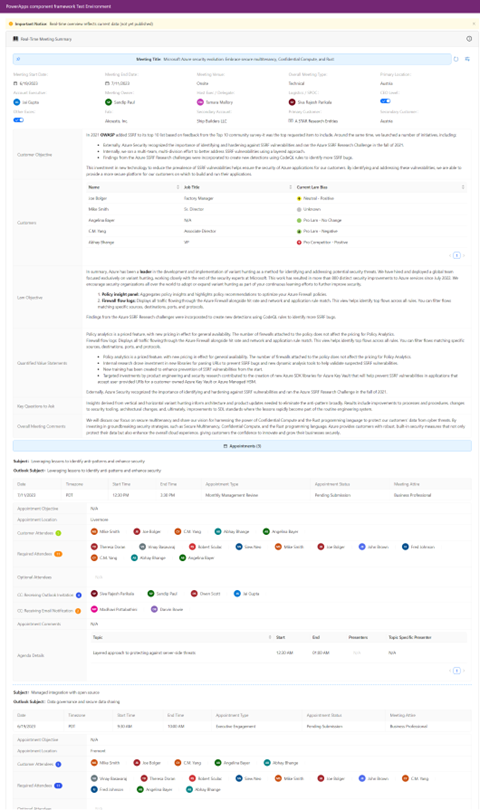
The cloning functionality allows users to select specific appointments and agendas from an existing meeting and duplicate them into a new meeting plan (see Figures 3.2 and 3.3 below)—perfect for recurring meeting types or when setting up similar events.
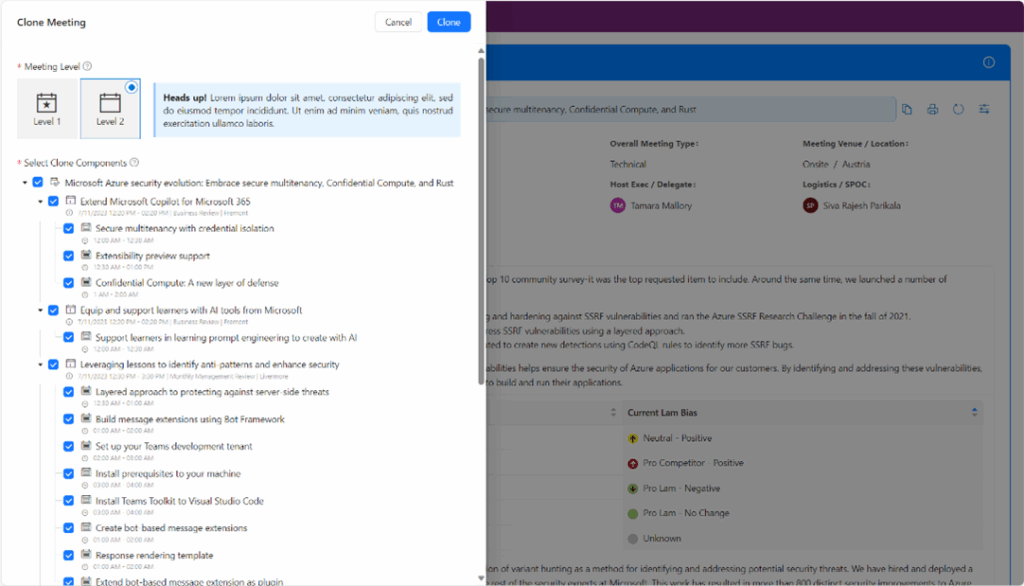
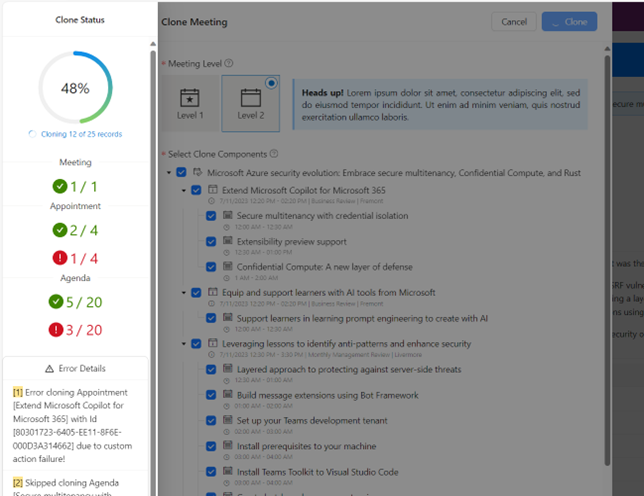
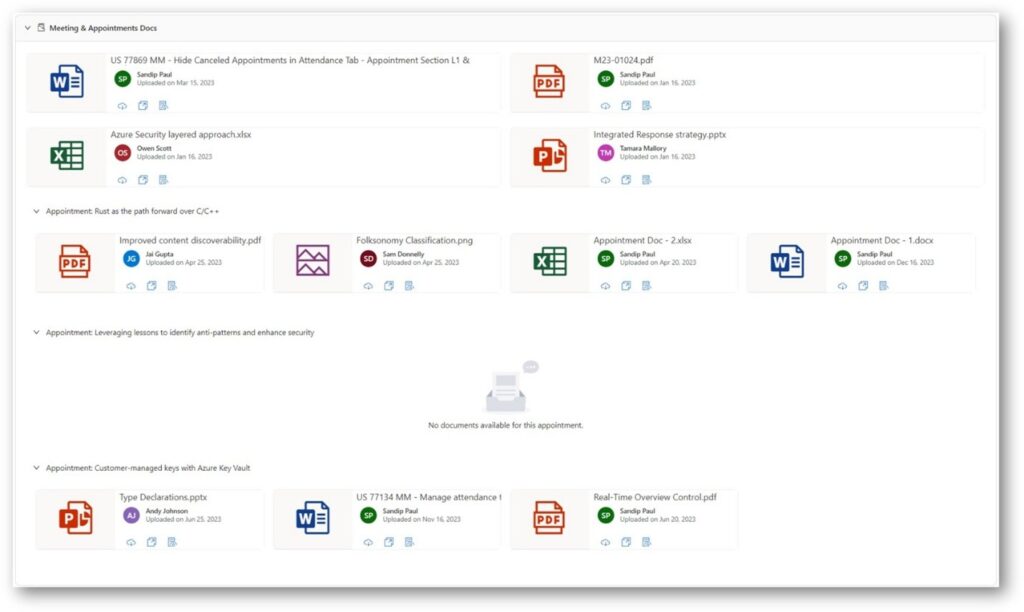
The Impact
These features eliminated manual documentation work and significantly reduced the time needed to set up similar meetings, improving efficiency for the sales team managing multiple customer engagements.
Example 4: Multi-Document Upload with Metadata Management
The Challenge
A client needed to manage vendor request documents but faced a common UX limitation: They could not upload multiple files at once and also could not assign metadata to each document during the upload process. This meant performing the same upload process again and again.
The Solution
We built a PCF control that supports drag-and-drop or selected multi-file uploads while allowing users to set metadata for each document during the upload process (see Figure 4.1 below). The control offers both card and grid layout views for managing documents (see Figures 4.2 and 4.3 below), providing flexibility based on user preference and the number of files being managed.
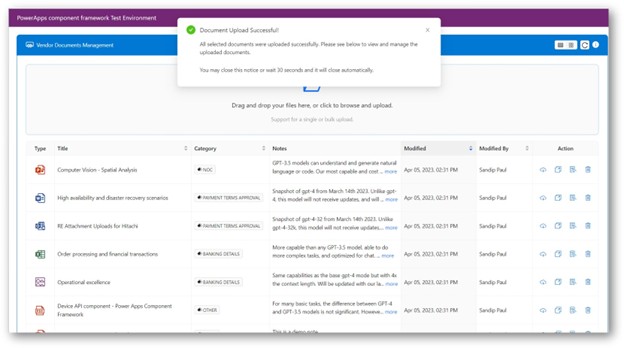
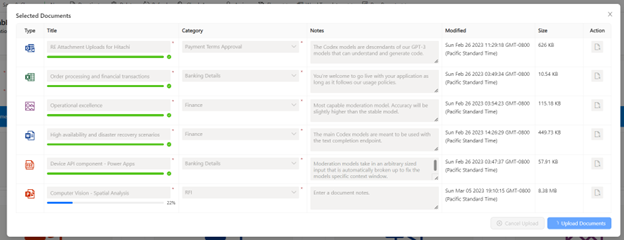
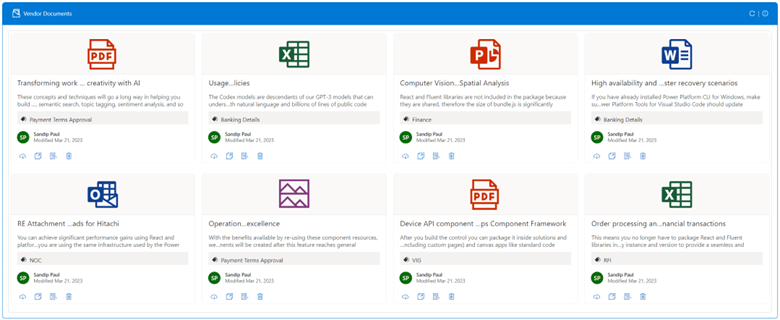
The Impact
This streamlined the document management workflow, reducing the time spent on vendor request processing and improving data completeness from the moment of upload.
Example 5: Interview Scheduling System for HR Consulting
The Challenge
An HR consulting firm offering job classification services needed to schedule interviews with incumbents, supervisors, and managers. They required an intuitive interface for scheduling, rescheduling, and managing interviews across their Dynamics 365 Sales implementation.
The Solution
We delivered an end-to-end interview management solution using PCF controls on both the Model Driven app (for internal staff) and Power Pages (for external users to reschedule interviews). Behind the scenes, we integrated with Azure Function Apps and Microsoft Graph APIs to provide seamless calendar integration and automated notifications.
The interface provides a visual, calendar-based approach to interview management with drag-and-drop rescheduling capabilities (see Figures 5.1, 5.2, and 5.3 below), making it easy for coordinators to manage complex interview schedules across multiple client engagements.
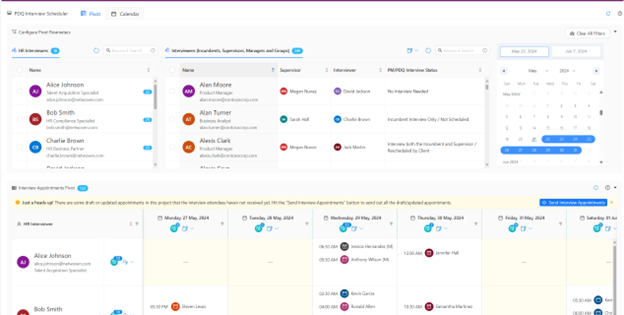
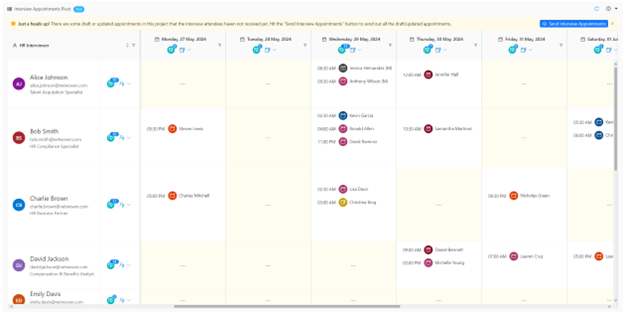
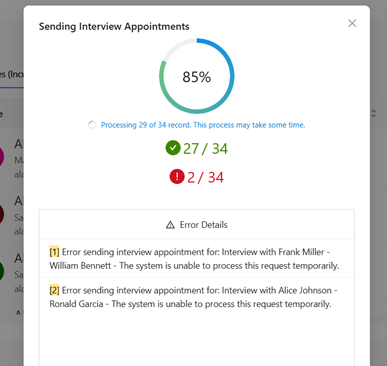
The Power Pages implementation allows external participants to reschedule their interviews through a user-friendly portal (see Figure 5.4 below).
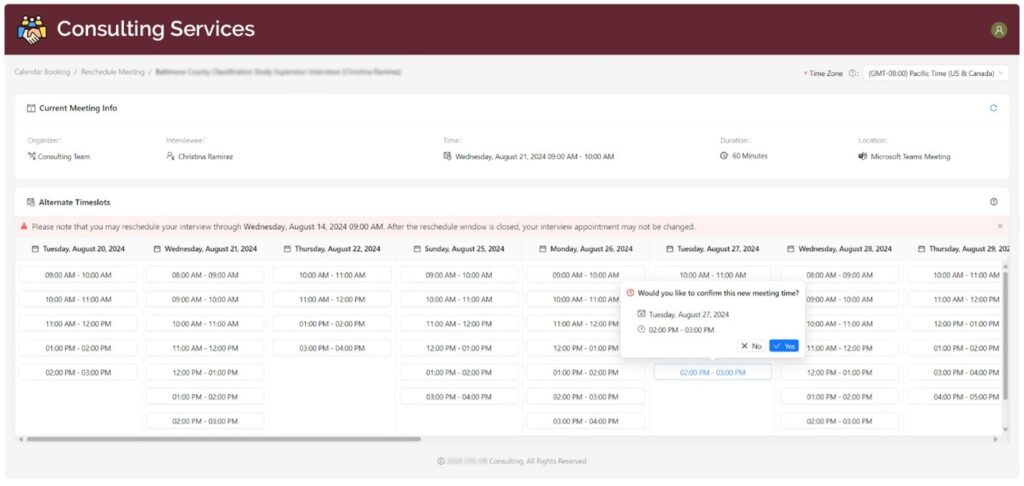
The Impact
The firm can now handle significantly more client projects simultaneously, with reduced administrative overhead and improved client satisfaction through the self-service rescheduling portal.
Example 6: Multi-Team People Picker for Notifications
The Challenge
A client needed to select multiple people from different Teams for notification purposes, but the out-of-box people picker didn’t provide an intuitive way to search across teams and build a notification list.
The Solution
We developed a custom PCF control that provides an intuitive search and selection interface for finding people across multiple Teams (see Figures 6.1 and 6.2 below). Selected individuals are stored in a custom table for use in notification workflows.
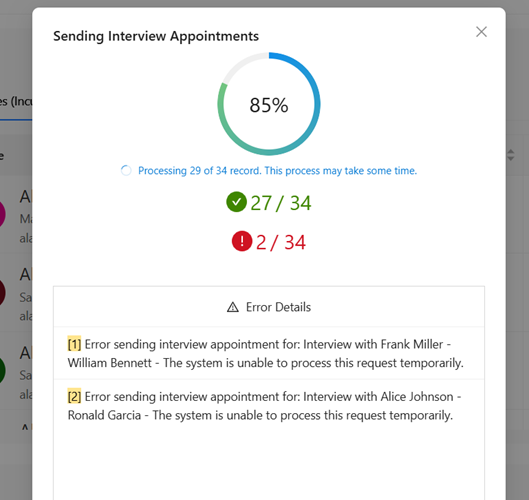
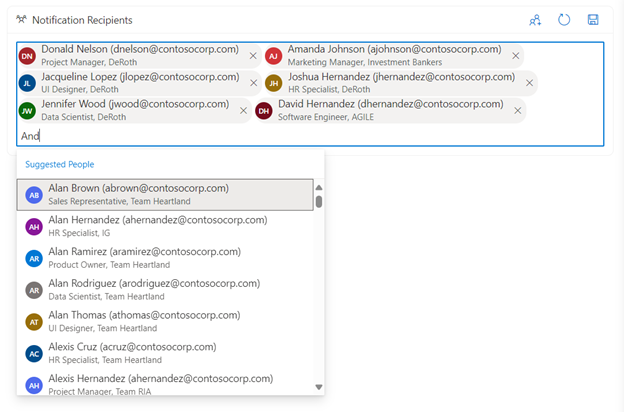
The Impact
This simple but effective control removed friction from the notification setup process and ensured that the right stakeholders were always included in important communications.
Key Takeaways
These examples illustrate a few important principles I’ve learned about PCF development:
- Solve real problems: The best custom controls address specific friction points that prevent system adoption or business efficiency.
- Leverage modern frameworks: React, TypeScript, Fluent UI, and Ant Design provide the building blocks for creating familiar, responsive interfaces that users actually want to use.
- Integrate thoughtfully: Custom controls are most powerful when they work seamlessly with out-of-box features like view personalization, rather than replacing everything.
- Think beyond the form: PCF controls can appear on Microsoft Dynamics 365 Business Apps, Model Driven apps, Canvas apps, and Power Pages – giving you flexibility to meet users where they work.
PCF allows us to push the boundaries of what’s possible within Microsoft’s Power Platform – bridging the gap between business requirements and user experience.
Whether it’s an editable grid, pivot view, or custom upload control, PCF empowers us to deliver highly interactive, modern, and business-ready solutions – without compromising the native platform feel.
If you’re struggling with user adoption of your Dynamics 365 implementation, or if your team is maintaining shadow systems in Excel because the platform doesn’t quite meet their needs, PCF development might be the bridge you need. The investment in custom controls often pays for itself quickly through improved efficiency and data quality.
Why Choose PCF?
- Microsoft-Backed Stability: Robust framework with ongoing Microsoft investment ensuring long-term reliability.
- Rich API Access: Comprehensive framework APIs with seamless server access through Web API.
- Performance Optimized: Built for speed and efficiency with modern web practices.
- Reusable & Configurable: Build once, use everywhere with flexible configuration options.
- Responsive Design: Modern responsive web design principles for all devices.
- No iFrames: Eliminates complex “plumbing” and integration headaches.










